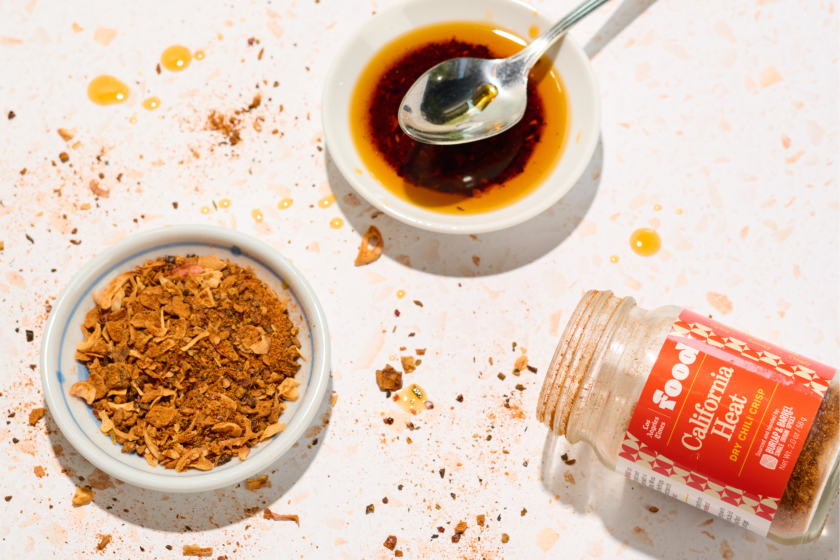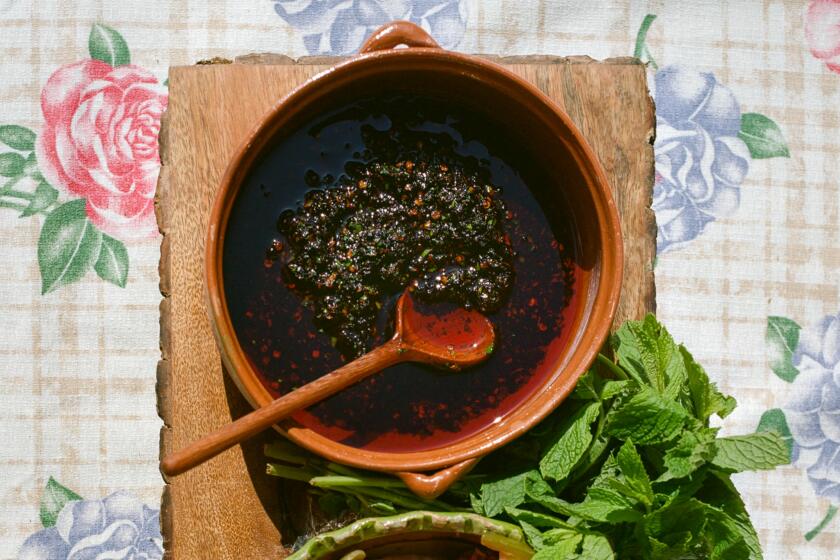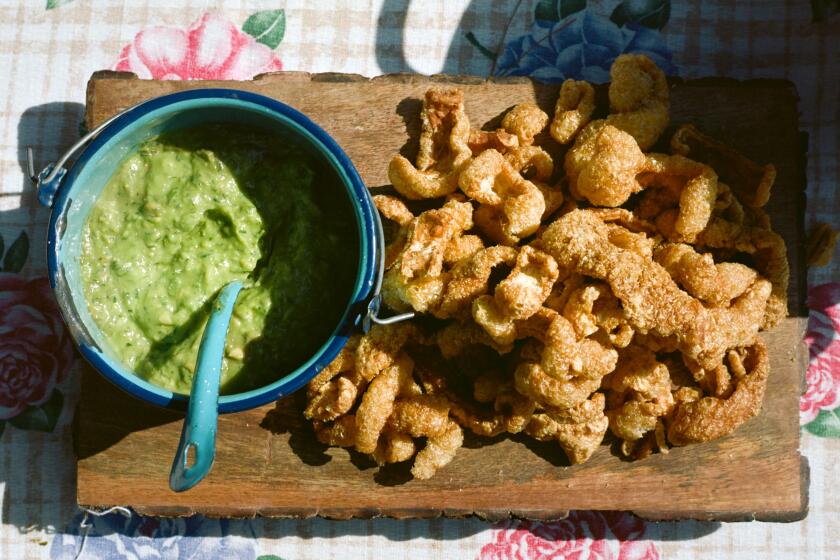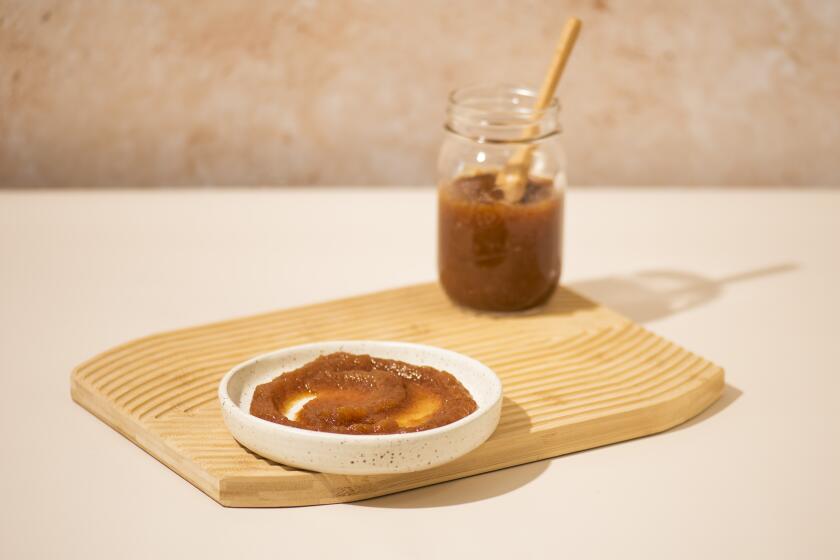Apricot jam
Most people have never tasted a perfectly ripe, fragrant apricot, or felt juice run as they bit into it or wondered at how the tangy flavor even seems to well on the tongue after swallowing. Resignation is such that most recipes call for dried fruit. A Lebanese saying: bukra fil-mishmish, or “tomorrow in apricot season,”translates roughly as “dream on.”
But we in California know better. We have Blenheim apricots, or, as some people call them, Royal Blenheims. Technically, the variety comes from England, where it likes a sheltering walled garden and royal horticulturist. But it is happiest here. California growing season is perfect for Blenheims to flower in the winter, grow while there is enough but not too much spring rain, and ripen in early July, narrowly beating the fierce heat of summer. The result, now appearing in farmers markets, is a glorious thing: dreamily fragrant, glowing yellow, with a blushing orange cheek where the fruit faced the sun.
But there is no time to waste. The Blenheim signs may have just gone up at farmers markets across L.A., but they will be down before the slowest among us get our eyeglasses out. Andrew Baker’s crew from Cirone Farms in San Luis Obispo gives them another two weeks. They sell Blenheims by the pound, for $2.50, but the people buying them at Santa Monica Farmers Market last week were carrying them off by the case, at $25 for 20 pounds. If you want less fruit, bring a box so as not to bruise them in a bag.
If you can, buy a case. Buy enough for everyone in the house to have, one, two, make that five (they’re not much bigger than a golf ball, at the largest a Hacky Sack).
Then have a plan. Make a tart. Better yet, make jam. If you can’t do it immediately, a friend who makes superb Blenheim jam assures me that until you do, you can simply halve and stone them and freeze them in a Ziploc bag. Save 10 pits for every 5 pounds of fruit, because the kernels inside will be needed as flavoring.
These will impart an all important almond note. Apricots are in the prunus genus, along with plums, peaches and almonds, and they have a special affinity for almonds. The kernels go in the famous Amaretti cookies, which, by the by, are superb with jam. But don’t overdo it. In small amounts the kernels are delicious; in medium amounts, bitter; in absurd amounts, a potentially lethal source of cyanide.
Most apricot jam recipes call for dried fruit, precisely because the fresh fruit is normally so disappointing. But make jam fresh from ripe Blenheims, and you will experience an intensity of flavor, an aroma and brightness so special that it gives meaning to living in Los Angeles. Taste a Blenheim, and the world suddenly divides up into places that have them and places that don’t.
Wash and pit the apricots, reserving 5 stones. If the apricots are big, quarter them; if small, cut them in half. Don’t peel, but trim away any really smutty spots. Combine the apricots and sugar in a nonreactive wide-bottomed pan. Crack the shells of the 5 pits, and remove the kernels. Peel and chop the kernels finely. Add the kernels and the lemon zest to the apricots and sugar; stir well. Leave to macerate (or soften and break down) for at least 30 minutes, even overnight. Begin cooking when the apricots have released their juices.
Sterilize 5 (7-ounce) canning jars or 4 (8-ounce) jars.
Bring the pot of fruit to a boil over a high heat, stirring as needed to keep it from sticking. As a yellow froth forms over the top, skim it off. Reduce the heat if the mixture begins to stick, but take care not to lower the temperature too much, or this will extend the cooking time as much as 20 to 30 minutes (and cause too much water to evaporate and the fruit to lose its texture).
As the foaming subsides, continue to stir to avoid scorching and cook the mixture for 10 to 15 minutes, until it reaches 220 degrees on a candy thermometer. If you don’t have a thermometer, put a plate in the freezer before you begin cooking. To check the consistency of the jam, put dabs of the hot jam on the chilled plate, so it will cool and set quickly. The jam is done when it is loosely set and spoonable on the chilled plate with whole chunks of fruit still visible.
Add the lemon juice to the jam, stir and immediately remove from heat. Pour into warm sterilized jars and seal according to the jar manufacturer’s instructions. Constance Spry, the Fannie Farmer of Britain, says to seal the jars either when they’re hot or room temperature. The jars are easier to handle at room temperature.
Get our Cooking newsletter.
Your roundup of inspiring recipes and kitchen tricks.
You may occasionally receive promotional content from the Los Angeles Times.















